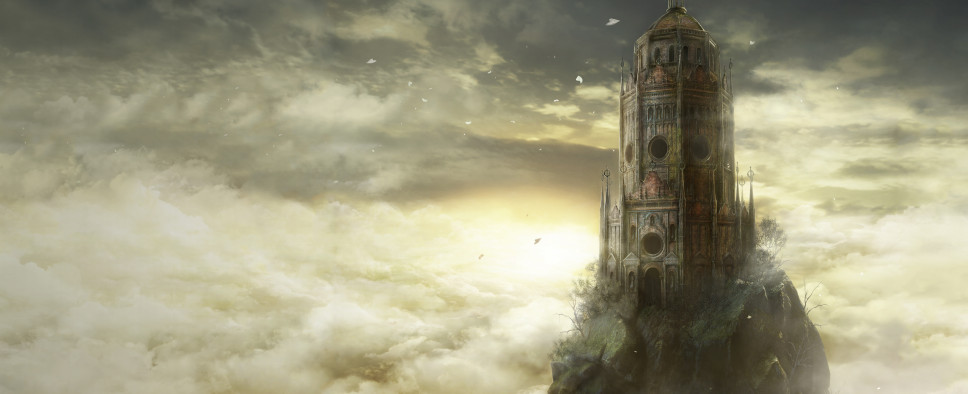Dark Souls - Architecture of an Eternally Dying Land
-
Category: News ArchiveHits: 3183

I've read a lot of Dark Souls-related articles over the years. Some of them were quite insightful, others a bit more far-fetched. But regardless of their merit, the sheer amount of editorial content that series sparks just goes to show that there's a lot more there than initially meets the eye. For example, this new article on Eurogamer analyzes the decaying, crypt-like architecture of Dark Souls in a scholarly fashion, and it makes for an oddly gripping read. A few paragraphs:
Yet in Dark Souls' world these divisions between life and death have become lost, and so it follows too that the binary of tomb and room might be lost also. The spaces of the Dark Souls series are eternally caught in a state of undeath, between collapse and continuance. Every architectural space in the series seems to oscillate between the state of tomb and room. Take the new Londo ruins, for example, a series of hollow voids above a lake that is later to be revealed to be the container for countless corpses, concealed out of sight. Or the Undead Crypt in Dark Souls 2, a vast funerary complex of monumental tomb architecture that at its heart hides the lands ruler not in the form of a corpse, but as an immortal living being, pacing his own crypt as if it was his throne room, awaiting, like the undead of the first games asylum, the end of the world. Of course, in Dark Souls' case, the end of the world has already arrived. The Ringed City DLC, which this year marked the end of the series in both a fictional and real sense, invited players to "journey to the world's end," to descend into the first and last city. In the game, when we approach the Ringed City itself, we see it circled by a vast stone wall, just like the wall that obscures the city of Anor Londo in the first Dark Souls. And looking on this vast walled city I was brought back once again to my first experiences with the series, experiences that might instruct another way of considering its architecture.
It's no coincidence that my Dark Souls character is and always will be named Steerpike. As the antihero of Mervyn Peake's incredible three volume gothic masterpiece, Gormenghast, his was the first name that came to mind when I set eyes on the vast rock wall of Anor Londo and the void below from the crumbling vantage point of Firelink Shrine. In Peake's world, an impossibly vast castle plays host to scattered generations of royalty and their servants, all locked in senseless rituals that guide them like nomads amongst overgrown halls and abandoned apartments. In his books Peake casts architecture as a weighty burden, a physical realisation of tradition, ritual and history that its inhabitants must try, and fail, to maintain and make sense of. The castle of Gormenghast is a vast undead corpse, returning to nature. Not a corpse of a single human however, but the corpse of an entire civilisation falling into ruin. Take Peake's first description of the castle itself: He talks of the "shadows of time-eaten buttresses, of broken and lofty turrets" but perhaps the most striking feature is the way he describes the vast central "Tower of Flints" as rising "like a mutilated finger from amongst the fists of knuckled masonry and pointed blasphemously at heaven. At night the owls made of it an echoing throat; by day it stood voiceless and cast its long shadow." This anthropomorphic description isn't trying to suggest that Gormenghast might be a character in the novel, instead it is presenting it as a body; a voiceless, mutilated, blasphemous body. A body who must await the end of the world in order to truly die.
In evoking the connection of Dark Soul's architecture to Gormenghast, the Ringed City suggests to me that the spaces of Dark Souls too could be thought of it the same way. They are perhaps the mirror image, not of the tomb or room, but of the bodies they contain. Like the series' "hollows" a profoundly architectural name for the undead, the architecture of the Dark Souls' series is, more than a container for walking corpses, and is instead a withering, putrefying, deathless corpse in itself. Its spaces, the cathedrals, castles, caves, sewers, fortifications and forest huts of Dark Souls and its sequels are hollow bodies, locked in processes of organic decay. A descent through the Ringed City only seems to strengthen this idea: it is a structure which at its highest point is drained of color, dry and calcified, but as you descend becomes fetid, waterlogged, sinking into its own fluids. At its base, it is infested with insects and parasites, its buildings pointing haphazardly up out of a congealed swamp. This imagery is something that can be traced through the series: the lowest point of the original game is the Ash Lake, a vast interior filled with branching structures like the interior of a set of calcified lungs, while the depths of Dark Souls 2 hide the Black Gulch, home of The Rotten, a literal living structure of undead corpses. Even when we return to Anor Londo Dark Souls 3, we find it decaying into a putrefied, black murk, as if it was not made of steel and stone, but some organic material that mirrors their properties.

